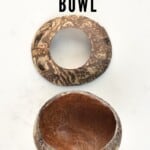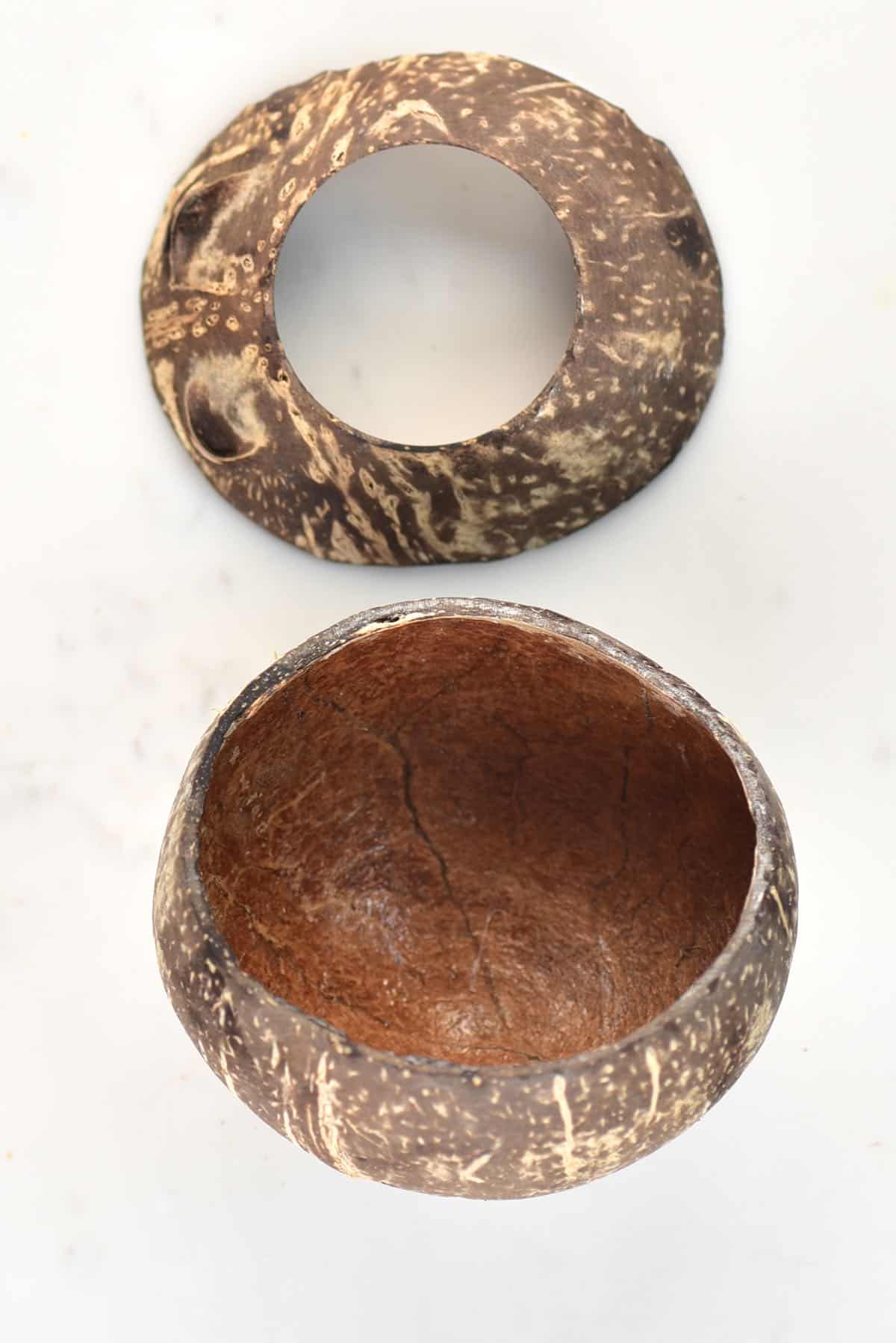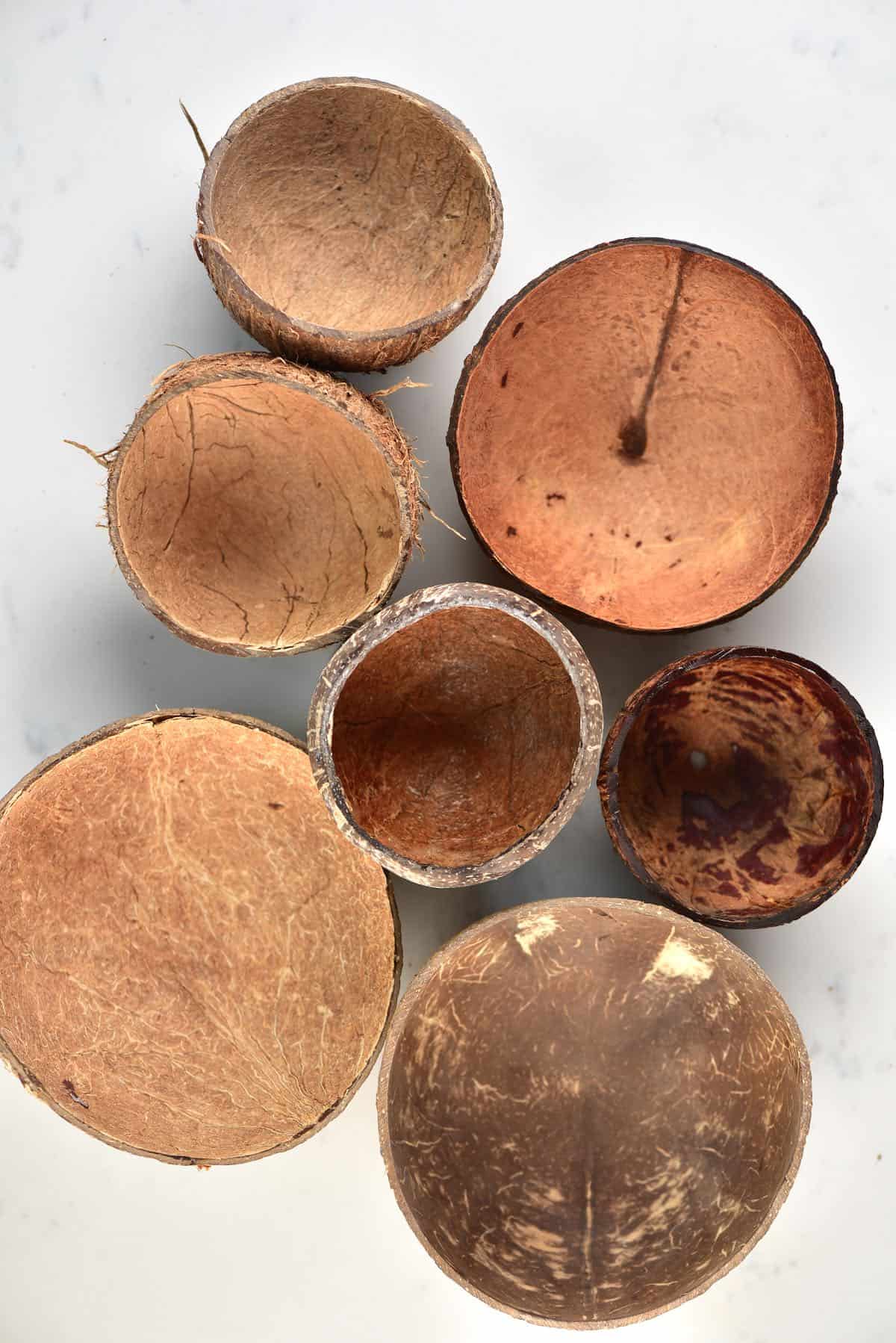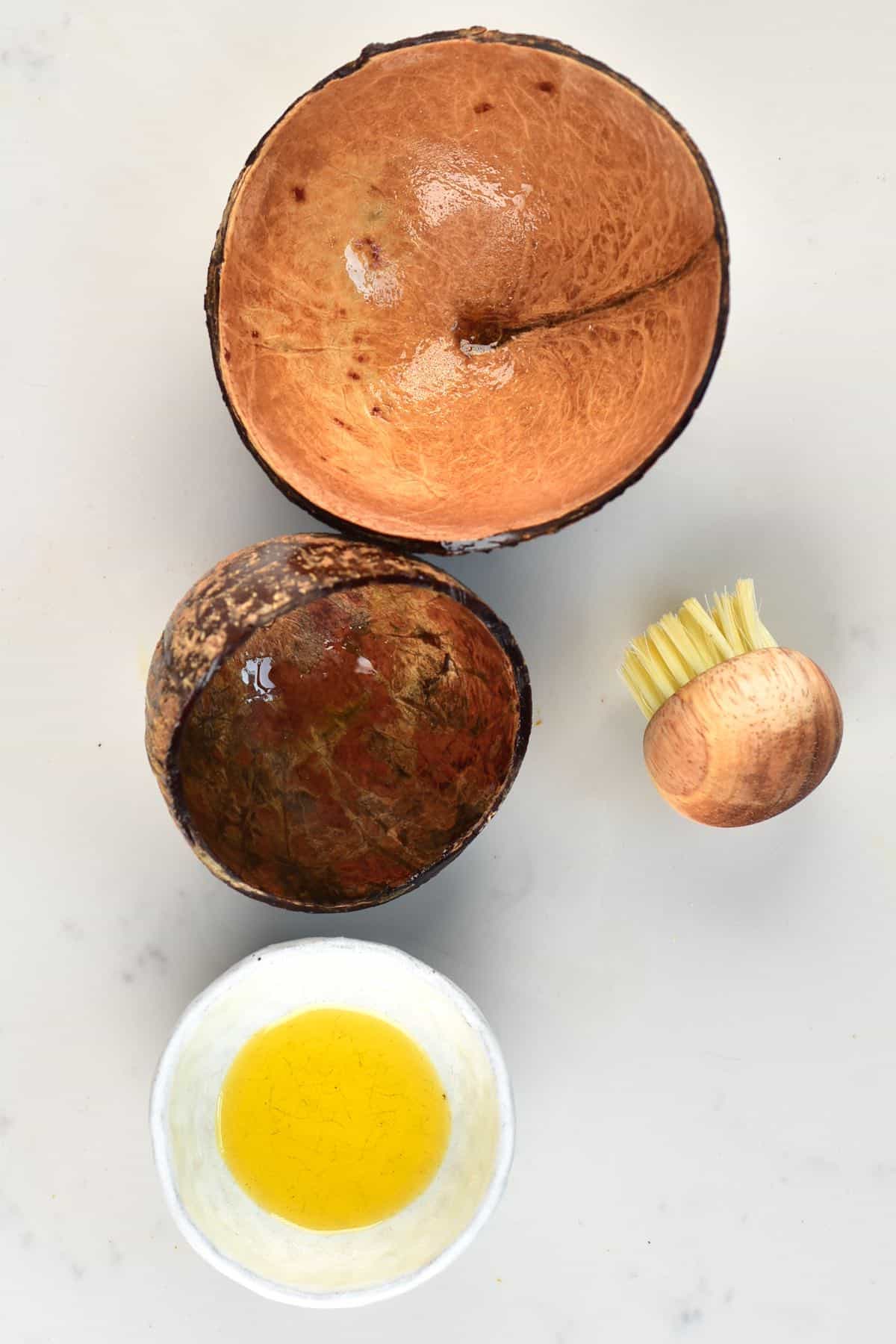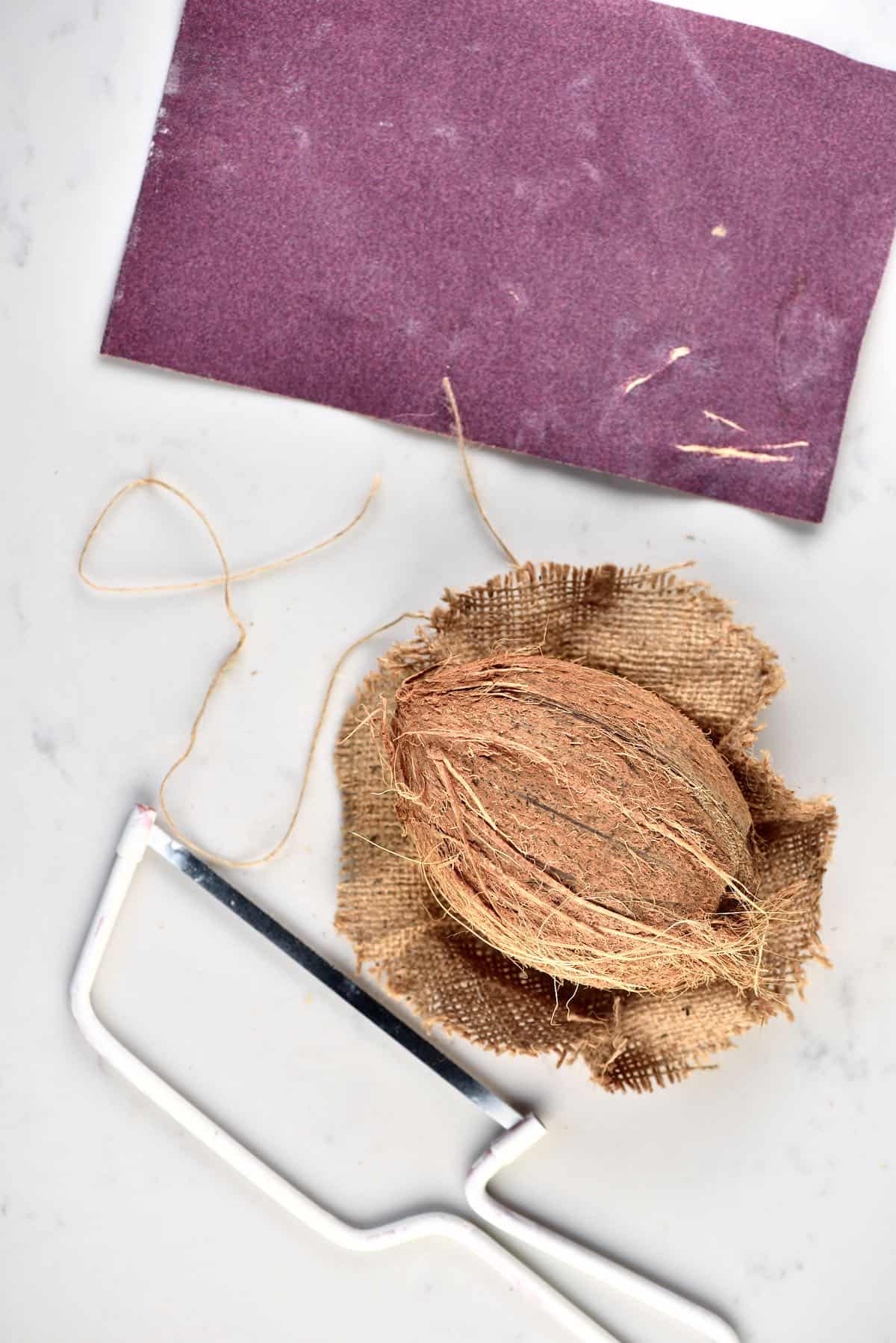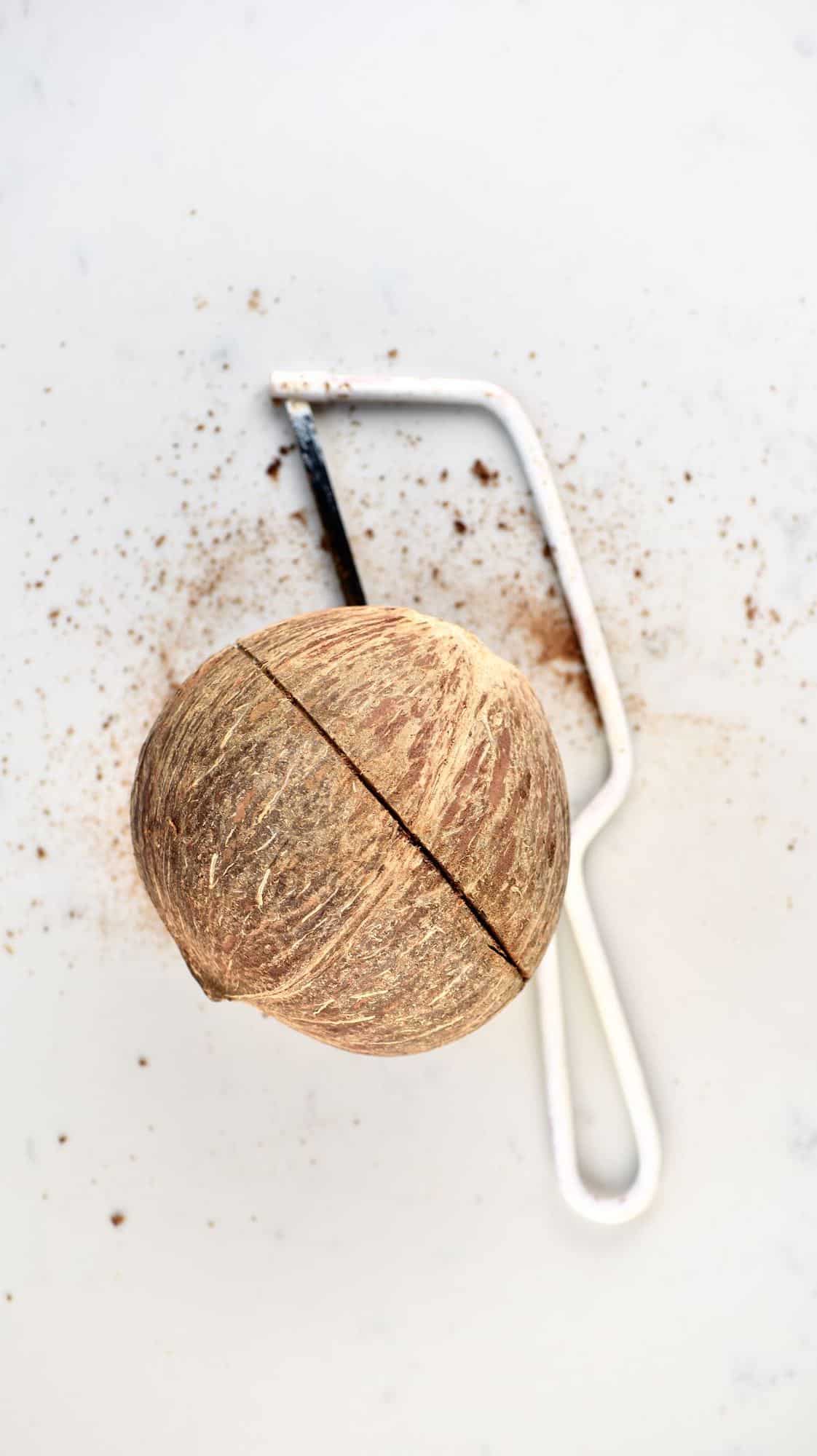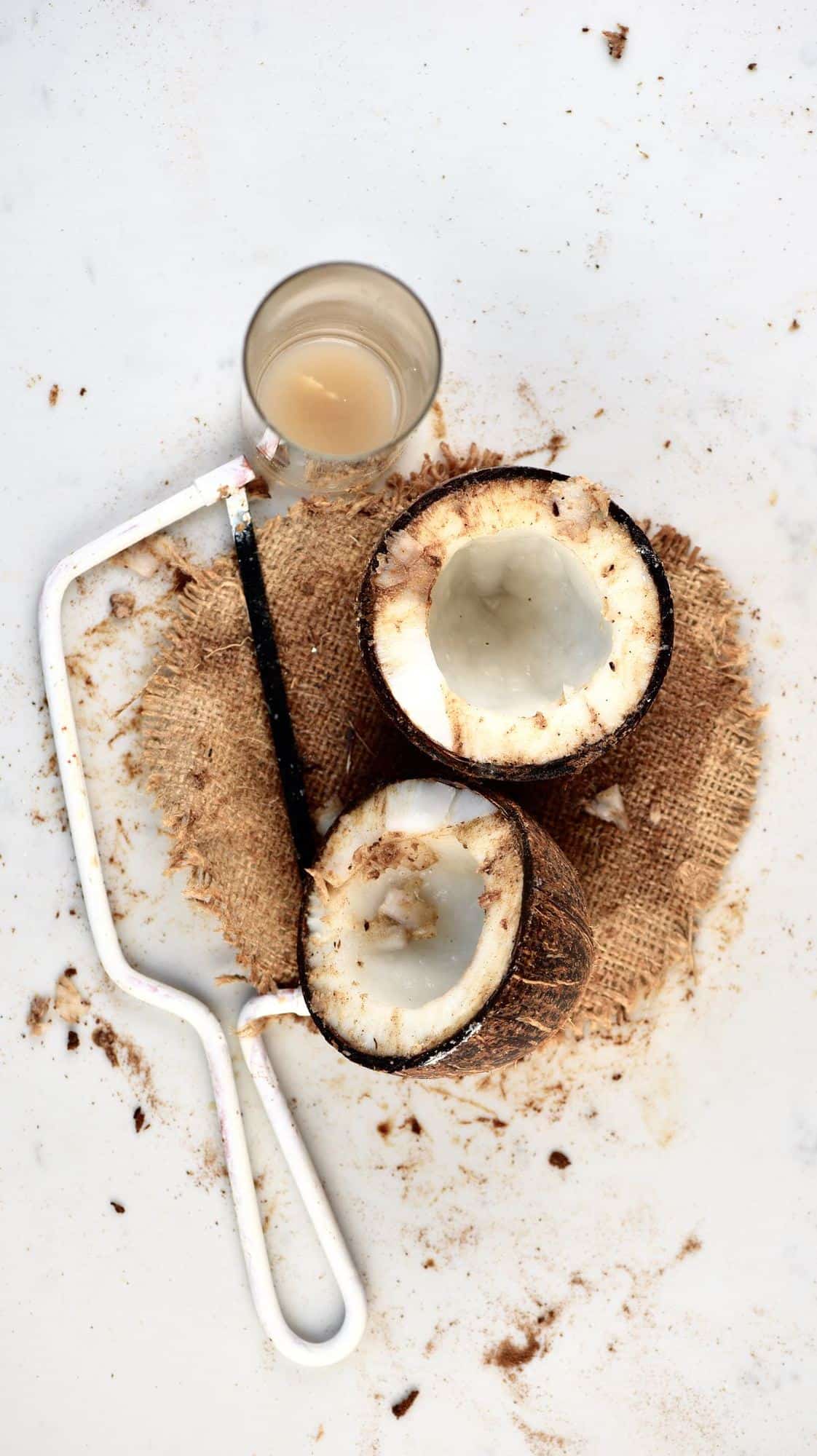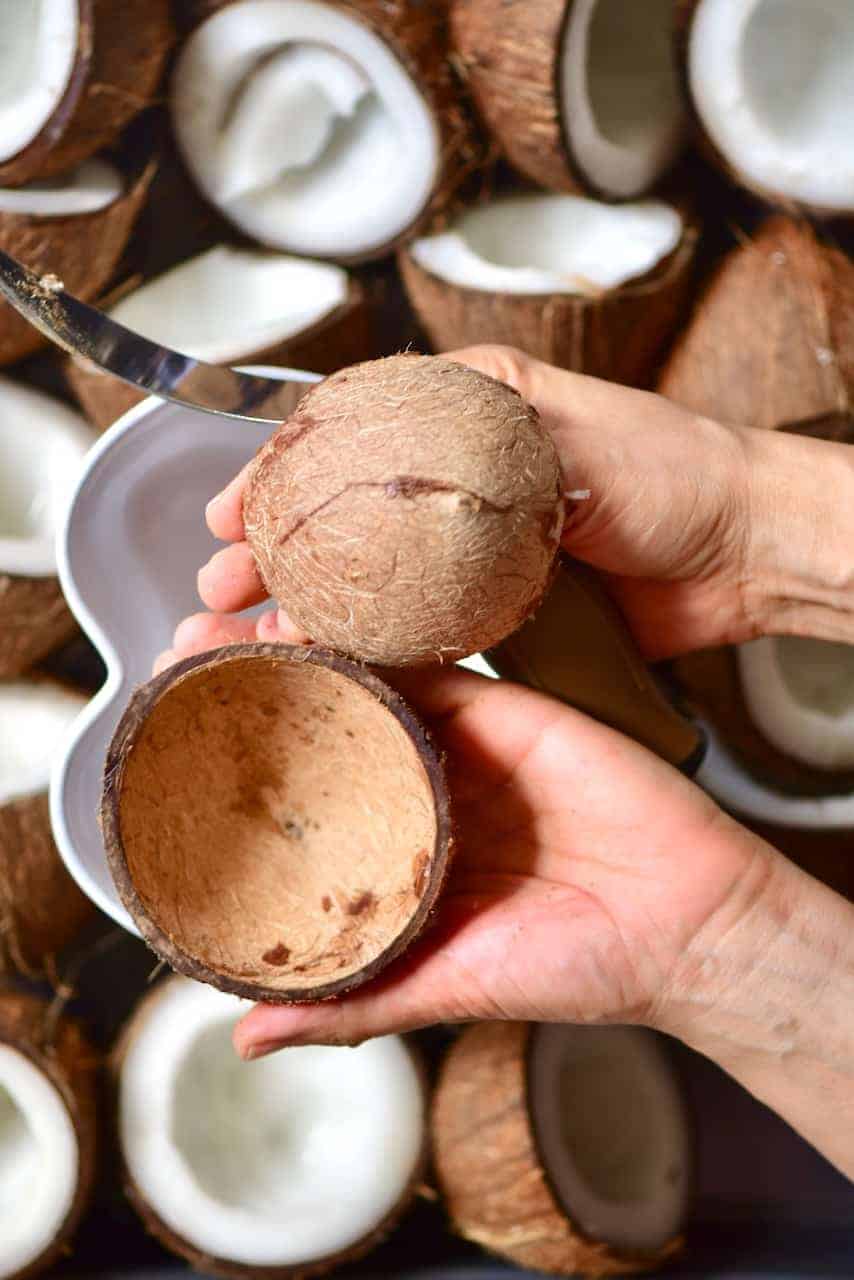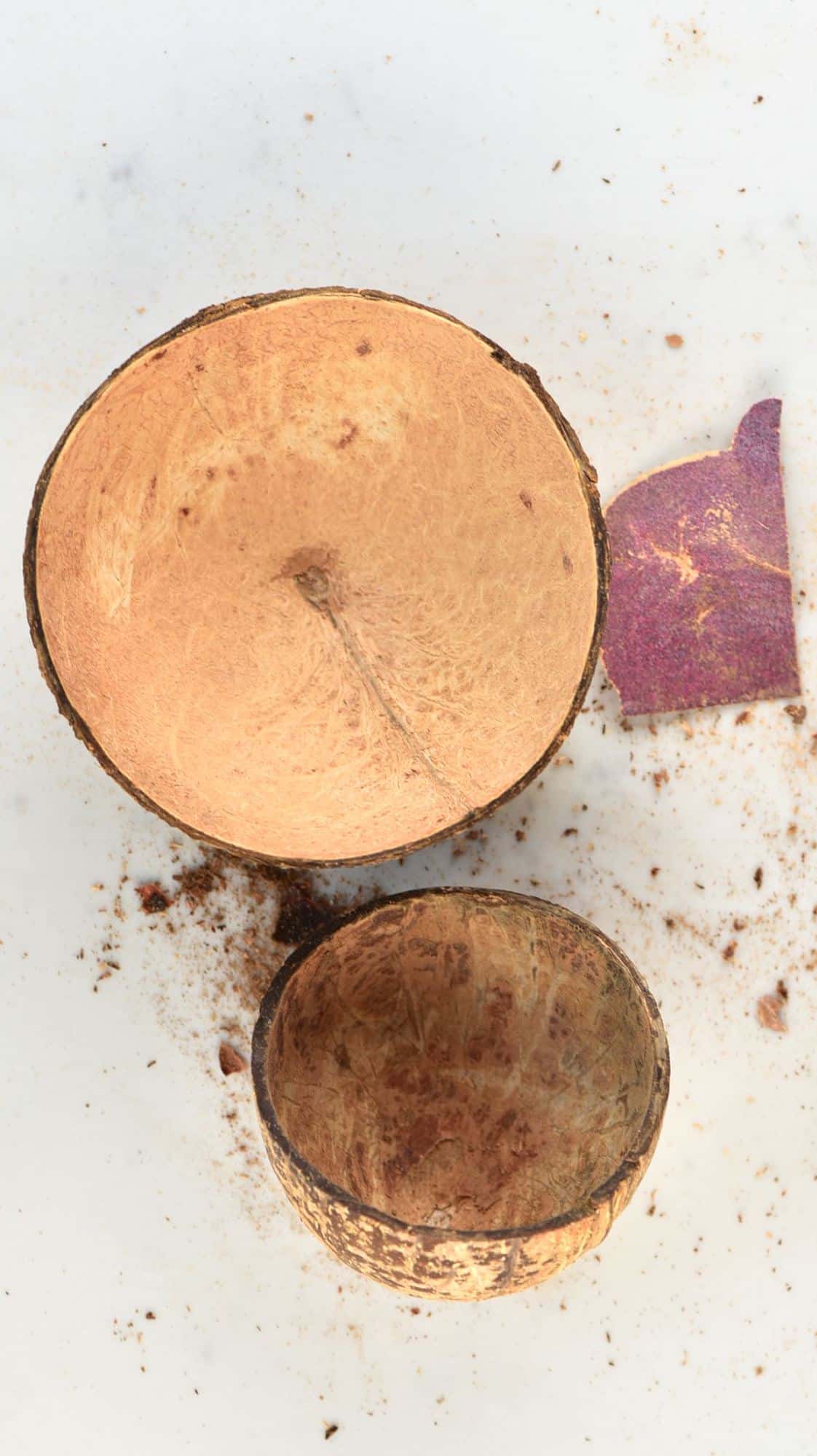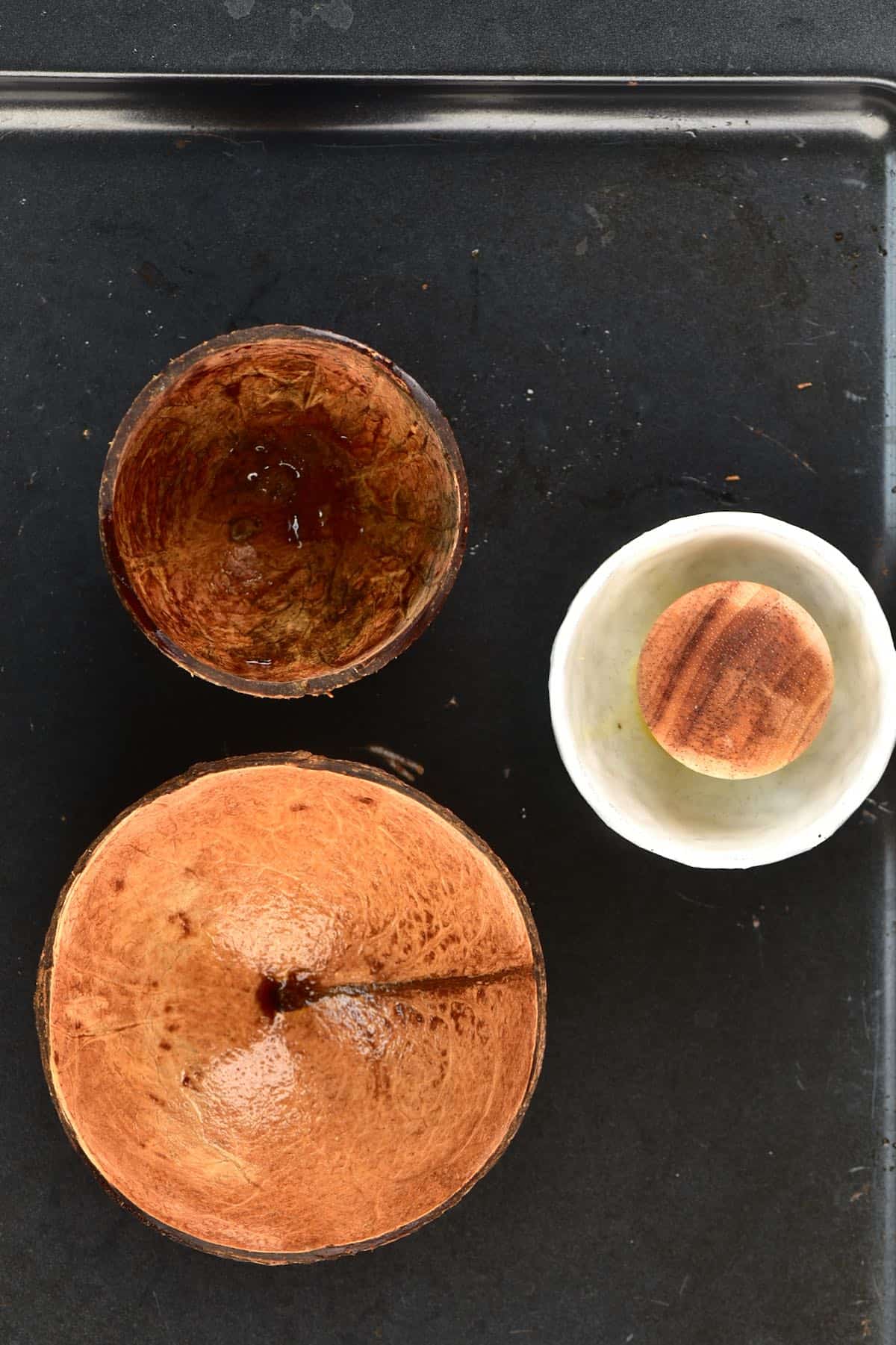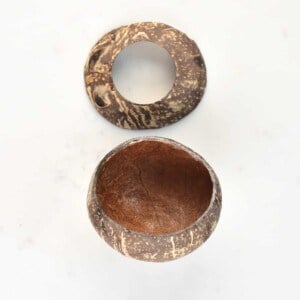Coconuts are one of my most well-praised, versatile fruits. Not only are there tons of ingredients and uses that you can get from a single coconut, but we can even utilize the shell for gorgeous homemade coconut bowls. These eco-friendly bowls are made using just a few easy-to-source ‘tools,’ are far more cost-effective than buying them elsewhere, and are a great way to reduce waste for the coconuts. Note This post was originally written to contain the DIYs for coconut bowls, shredded coconut, and coconut flakes. However, due to all the information I had on each DIY, I decided they all deserve their own post. Here are the new posts for Shredded Coconut (Desiccated Coconut) and Coconut flakes/Chips. I buy lots of coconuts – you would do too if you were making homemade coconut oil, coconut cream, coconut butter, coconut milk, coconut yogurt regularly (and you should, they’re fantastic!). That means a lot of shells that I don’t want to throw away. Instead, you can make coconut shell bowls. Whether you want them to store things, to turn into a coconut candle, or for food purposes, the process is super simple. Plus, I love gifting these ‘handcrafted’ natural organic coconut bowls to friends and family, too. They are surprisingly simple and cost-effective to make and yet make for an impressive gift. Plus, these coconut bowls are 100% natural and free of BPA, toxins, synthetic materials, plastics, etc. You don’t need any specialized equipment for any of these DIYs, either. Although, I did use a small saw to cut the coconut in half so that I’d get a perfectly even cut for my bowls. You can pick up a little hand saw from any hardware store, and the entire cost of making this DIY is still cheaper than buying coconut bowls elsewhere (most of the time, anyway).
How to make coconut bowls at home
What’s needed
Mature Coconut/s – It’s best to choose ones that have slightly flatter ends, to balance easier and nicely round-shaped. Plus, ones that don’t have too much of the outer fibrous husk. Small handsaw – can be bought very cheaply online or from local DIY stores. Sandpaper – coarse and medium grit works best. A brush Linseed Oil – or any food-safe medium that will lacquer/waterproof the coconut bowls. Other options include generic vegetable oil, walnut oil, or even Extra Virgin coconut oil. Food-grade mineral oil mixed with beeswax is suitable for items you plan to wash a lot. You can also use any DIY store lacquer for bowls that won’t be used for food purposes.
The step by step
First, open the coconut: When making bowls, it’s best to use a small handsaw to cut the coconut precisely in the middle. Many other methods of opening the coconut may end up in uneven sides. However, if that’s not a worry for you, then use whatever process you prefer. If using a handsaw, place the coconut on a kitchen towel or softer surface to stop it from rolling away. Hold one end of the coconut (not near the saw!) and then begin to push the handsaw back and forth slowly. When you’ve managed to saw an inch or two into the coconut, turn it over and lightly pull at the cut to drain the coconut water into a bowl (save this to drink!). Continue to saw the coconut all the way through. Next, remove the coconut meat: You can use a butter knife or other ‘blunt’ ended knife to slot between the coconut meat and shell. Work your way around the coconut, prying the meat away from the shell, and eventually, it will come loose. Alternatively, you can get specific ‘coconut tools’ to remove the coconut meat. But that’s only really worth it if this is an ingredient you work with often. Once the meat is free, then you can use this to make shredded coconut, coconut flakes, or pretty much any of the other coconut DIYs mentioned above. Now, it’s time to sand the coconut bowls: Use sandpaper to sand the entire surface of the shell halves, until smooth. This includes the ‘rim’ of the bowl. You can use medium-grit sandpaper for the outside of the bowl and work very lightly if you don’t want to ruin too much of the natural pattern. Finally, lacquer the bowl to make it food-safe: Brush some linseed oil (or your lacquer of choice) on both the inside and the outside of the bowls. You will need to repeat this step 4-5 times, drying in between, to seal it and make the bowl food safe completely. Note* For a more natural finish, you can just polish the inside of the bowl. After each layer of linseed oil, you can leave it to dry out at room temperature or accelerate the process in the oven.
Caring for the coconut bowls
Wash the bowl in lukewarm soapy water only. They aren’t dishwasher safe and shouldn’t be ‘soaked’ in hot water for long periods. Never place in the oven, microwave, or fridge. ‘Extreme’ temperatures can cause it to crack/damage. You can use the bowls with hot and cold foods. Over time the bowl will lose its sheen and oil coating. Simply, use another tablespoon of oil and polish the bowl, allow it to dry, and repeat once more. Voila!
More fun DIY handmade gifts
Beginners guide to making soap at home Homemade all-natural skin balm Non-toxic natural all-purpose citrus cleaner DIY coconut oil sugar scrub Candle Making for Beginners
If you give this DIY a try, then I’d love to know your thoughts in the comments below! Also, I love seeing your recreations, so feel free to tag me @AlphaFoodie.

